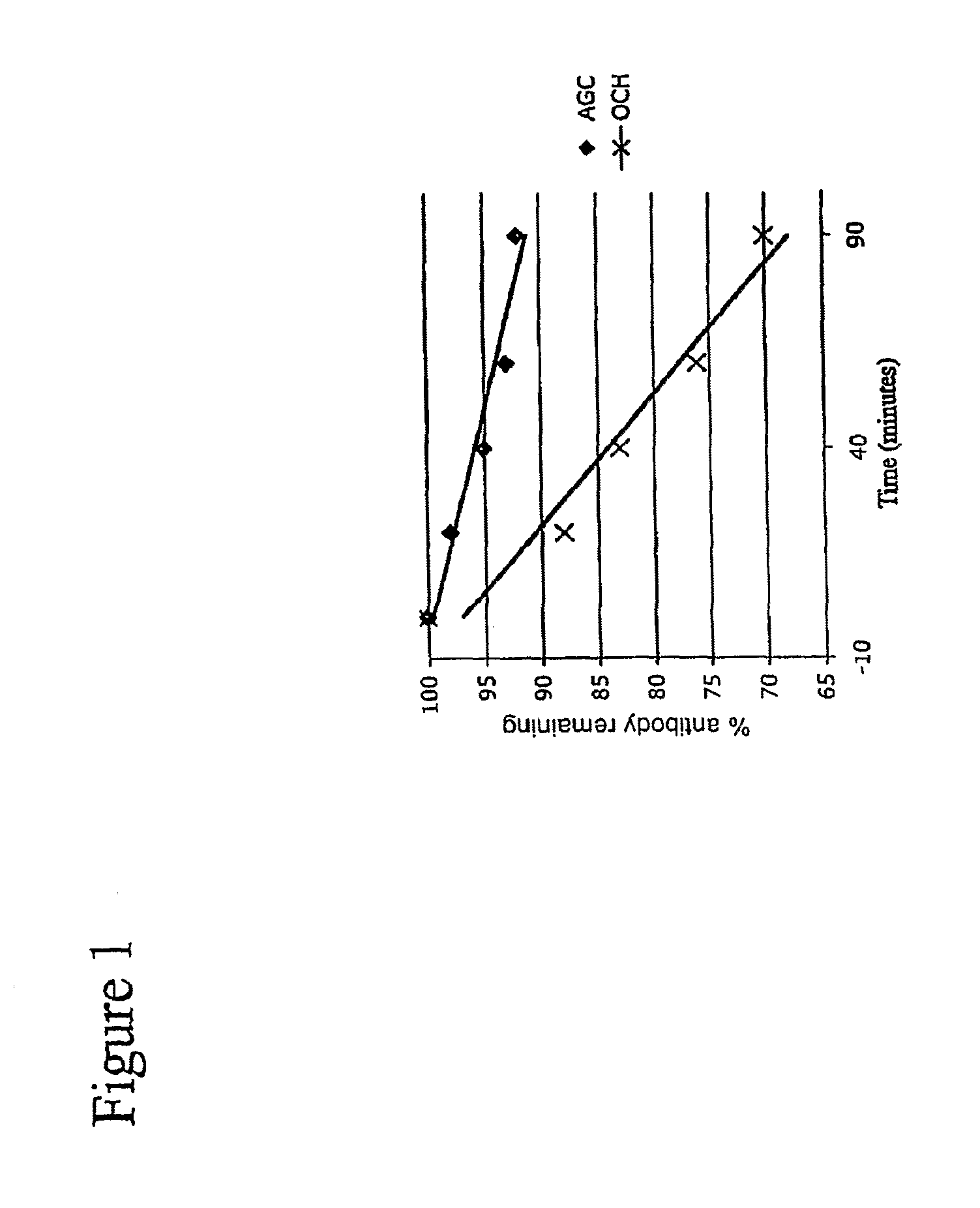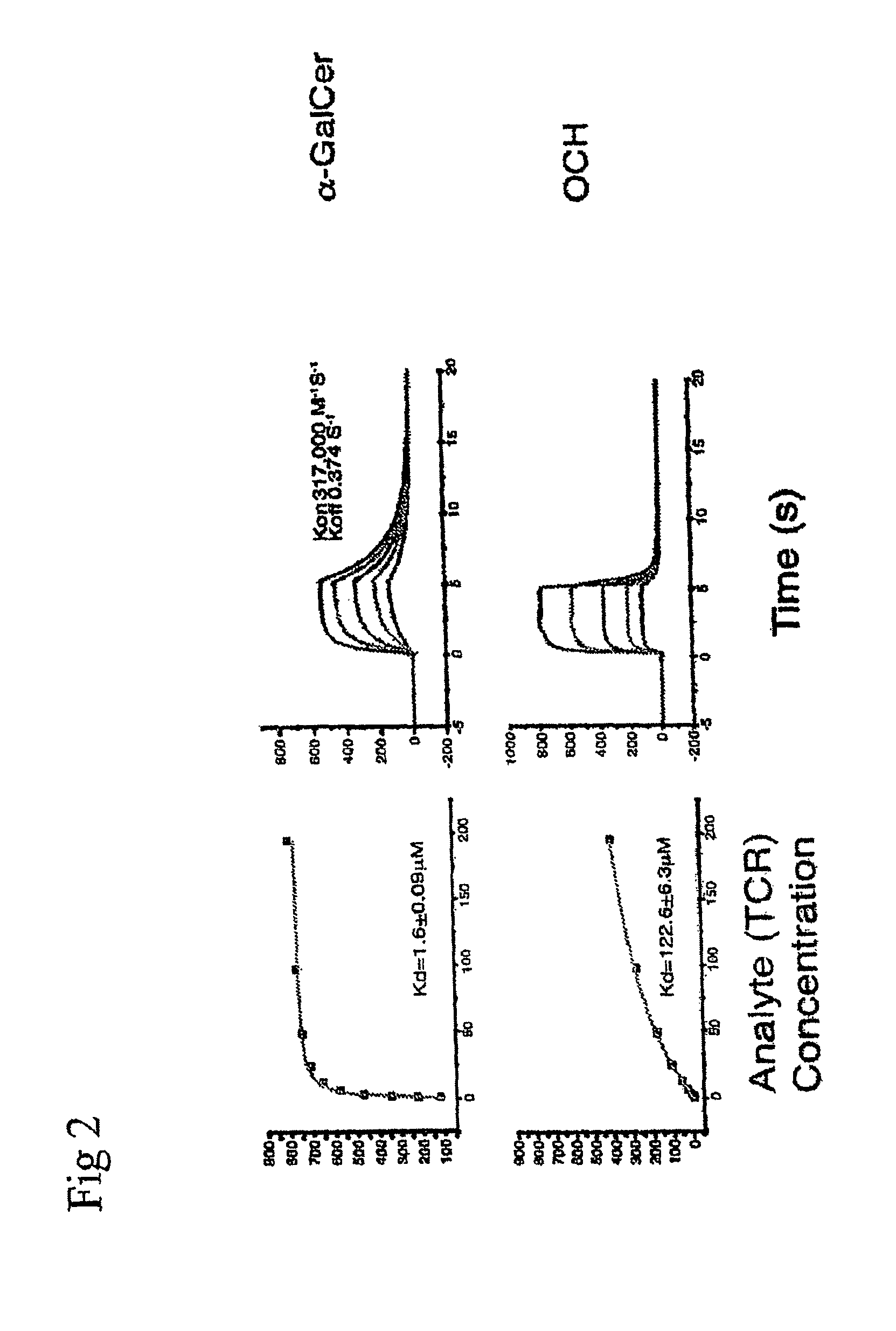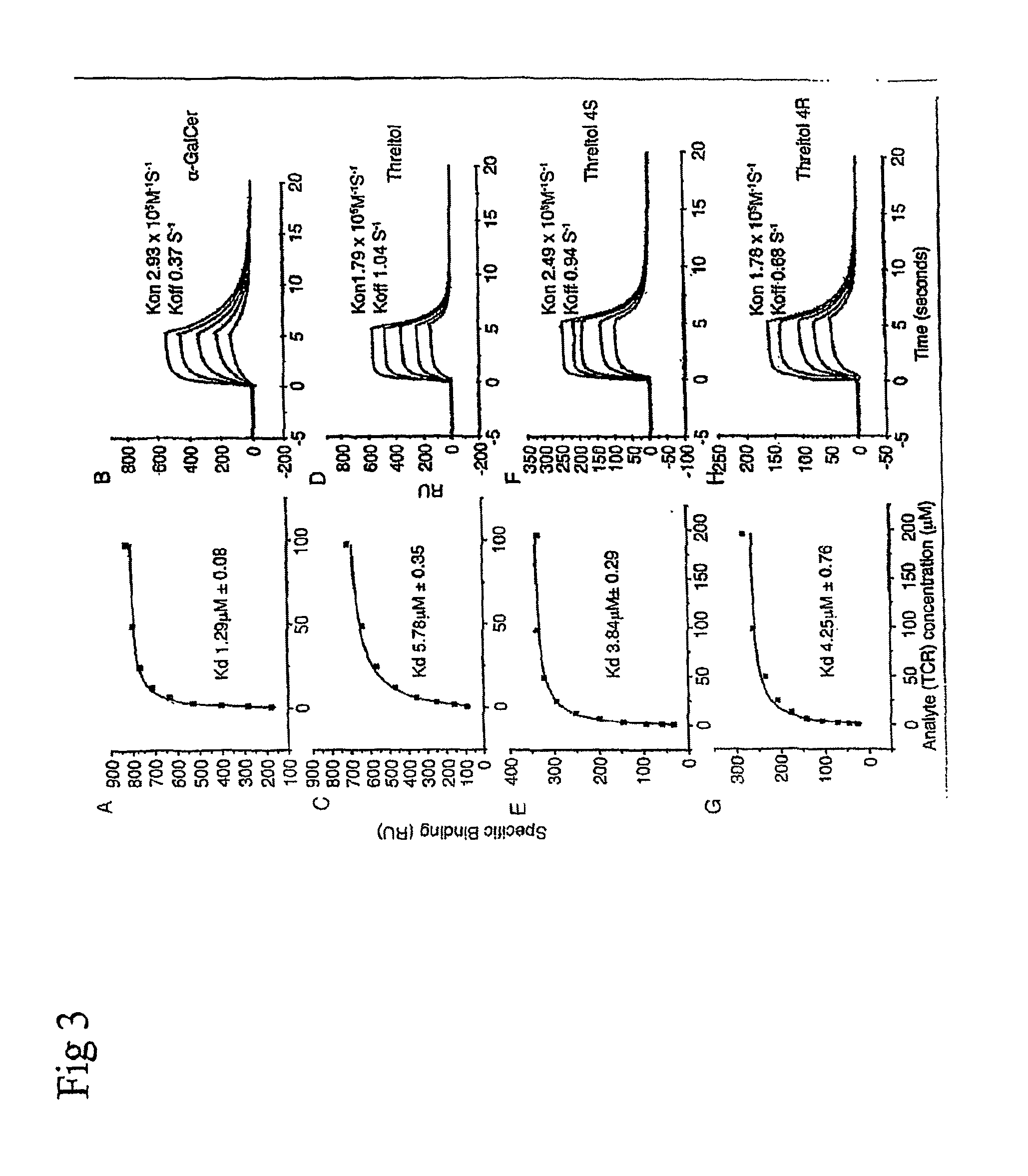Analogs of alpha galactosyceramide and uses thereof
a technology of alpha galactosyceramide and ceramide, which is applied in the direction of antibacterial agents, phosphorous compound active ingredients, immunological disorders, etc., can solve the problems of nkt cell loss, inability to regain pretreatment levels, and inability to detect pretreatment levels,
- Summary
- Abstract
- Description
- Claims
- Application Information
AI Technical Summary
Benefits of technology
Problems solved by technology
Method used
Image
Examples
example a
[0223]These experiments describe the priming of dendritic cells (“DC” s hereafter). In this, and the following examples, Compound 1, arabinitol ceramide; Compound 2, glycerol ceramide; or Compound 3, threitol ceramide derivatives) were used.
[0224]The methodology of Salio, et al., J. Immunol., 167:1188-1197 (2001), incorporated by reference, was followed. In brief, 2×105 human monocyte derived DCs were pulsed with 100 ng / ml of one of Compounds 2, 3, αGal-Cer, or vehicle solution, as a control. For DC pulsing, each of arabinitol ceramide (Compound 1), threitol ceramide (Compound 3), glycerol ceramide (Compound 2) and αGal-Cer was solubilized in vehicle solution (0.5% Tween 20 / PBS), and added to the medium of the DC cultures. NKT cells were also added to the DC cultures at a ratio of 10 DC / NKT cell. After 36 hours, supernatant was removed from cultures and analyzed for the presence of known DC maturation markers CD83, CD80, CD86, CD25, and CD38, all of which were analyzed via FACS, usi...
example b
[0227]In these experiments, T cell expansion was measured, by pulsing human DCs from PBLs with 100 nM of the known, immunogenic peptide MelanA26-35, ELAGIGILTV. The peptide was added to the DCs together with syngeneic PBLs from the same donor. To detail these experiments more fully, samples of DCs were irradiated with 3000 rads followed by a 3 hour pulse with the peptide, in serum free medium.
[0228]The cells were then washed thoroughly and incubated with autologous, PBLs, at a 1:10 ratio, in RPMI 1640 / 5% human serum. Recombinant human IL-2 was added at 10 U / ml from day 4 to day 7. At day 10, following the addition of the PBLs, cells were analyzed. Cultured cells were stained with anti-CD8 and A2 / MelanA25-35 tetramer. The percentage of MelanA specific CD8 T cells out of total CD8 positive cells was measured by FACS analysis.
[0229]The results indicated that when human DCs were incubated in the presence of NKT cells, threitol and glycerol cross-priming accours and that both compounds w...
example c
[0230]These animal experiments detail work designed to study the impact of the compounds of the invention in vivo.
[0231]Subject animals, five mice per group, received an intravenous injection of 400 μg of ovalbumin (OVA) together with 1 μg of one of the compounds of the invention under examination or an equivalent volume of PBS diluted vehicle solution. A subset of mice were injected with 25 μg of the molecule MPL (Sigma-Aldrich; extracted from Salmonella Minnesota) solubilized in PBS.
[0232]Following the injections, blood was obtained from lateral tail veins, and PBLs were isolated, using standard methods. The PBLs were then stained, directly, in vivo, with tetrameric, H-2 Kb / OVA 257-264, H-21 Kb complexes, following Palmowski, et al., J. Immunol., 168:4391-4398 (2002), incorporated by reference. The tetramers were prepared in accordance with Whilan, et al., J. Immunol., 163:4342-4348 (1999), incorporated by reference.
[0233]When the PBLs from naïve animals were compared to those fro...
PUM
| Property | Measurement | Unit |
|---|---|---|
| temperature | aaaaa | aaaaa |
| temperature | aaaaa | aaaaa |
| diameter | aaaaa | aaaaa |
Abstract
Description
Claims
Application Information
 Login to View More
Login to View More - R&D
- Intellectual Property
- Life Sciences
- Materials
- Tech Scout
- Unparalleled Data Quality
- Higher Quality Content
- 60% Fewer Hallucinations
Browse by: Latest US Patents, China's latest patents, Technical Efficacy Thesaurus, Application Domain, Technology Topic, Popular Technical Reports.
© 2025 PatSnap. All rights reserved.Legal|Privacy policy|Modern Slavery Act Transparency Statement|Sitemap|About US| Contact US: help@patsnap.com



